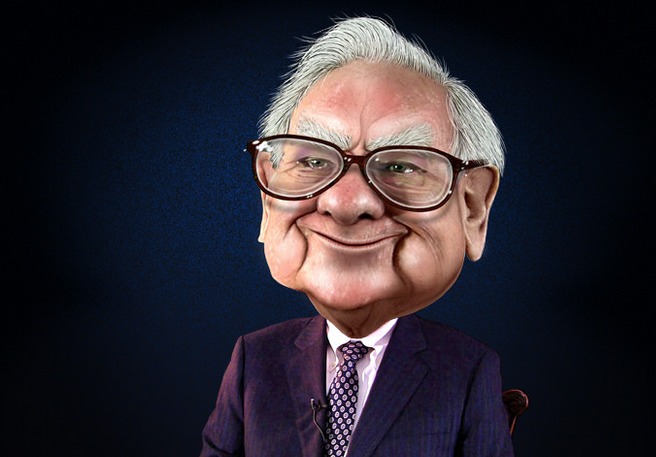 Author: Sherman Lee, Prudent Value
Author: Sherman Lee, Prudent Value
Covestor model: Prudent Value
In the second quarter of 2012, Prudent Value’s model portfolio returned -0.83% while the S&P 500 Index (S&P 500) returned -2.75%. Year-to-date, Prudent Value’s model portfolio returned +0.44% while the S&P 500 Index returned +9.49%.
Prudent Value’s year-to-date underperformance relative to the S&P 500 index is attributable to the portfolio’s large cash and fixed income positions. We ask investors to judge us over the long-term and when our portfolio is more fully invested.
In the short-term market prices may or may not reflect the intrinsic value of the companies in our portfolio. In Benjamin Graham’s words, “In the short run, the market is a voting machine. In the long-run, it’s a weighing machine.”
Our large cash and fixed income positions have worked out in the second quarter of 2012, but have not since the beginning of the fourth quarter of 2011. In tennis parlance, this was an unforced error because we started acquiring shares in third quarter of 2011, but did not follow through in a meaningful way.
While capital appreciation is our goal, we are also keenly focused on preserving capital. To that point we apply Buffett’s two rules of investing: Rule 1: Don’t Lose Money and Rule #2: Don’t Forget Rule #1.
In the second quarter of 2012 we initiated several new positions. Of these new positions, one we purchased much more than we intended in error. But instead of holding onto every share, we decided to scale out of it to a level closer to what we originally had in mind.
The total cost to the portfolio was about 70 basis points of which could have easily gone the other way had the share price advanced as we scaled out. In any case, we believe the modest cost to the portfolio will not be meaningful over the long-term.
With the new acquisitions, we effectively diversified into three new sectors: consumer staples, consumer discretionary, and telecommunications services. In the consumer staple space we added Tesco PLC (TSCDY) and Walgreens (WAG). In consumer discretionary we added Ctrip (CTRP) and in telecommunications services we added NTT Docomo (DCM).
Additionally, we purchased Annaly Capital Management Inc 7.625% Series C Cumulative preferred stock (NLY-C) and iShares MSCI EAFE Index Fund ETF (EFA). Because NLY-C is non-replicable as indicated by Covestor, no additional shares will be purchased and it will be sold off in the future.
NLY-C currently represents about 2% of the portfolio. All share prices above are currently trading higher than their cost basis with the exception of CTRP and WAG.
In the second quarter of this year, the top three performing U.S. stock funds by category were real estate (+4.26%), utilities (+3.33%), and healthcare (+2.42%) time. The worst three performing U.S. stock funds by category in the quarter were energy (-9.37%), natural resources (-9.50%), and precious metals (-11.80%).
While we do check the performance scorecard from time to time, our primary focus is to find great businesses run by shareholder-oriented management. Our favorite investments are undervalued wide economic moat businesses that typically sell products or services that have fairly predictable demand in both good and bad times.
Wide economic moat is a type of sustainable competitive advantage that a business possesses that makes it difficult for rivals to wear down its market share and profits.
To learn more about Prudent Value, please visit our Covestor page for details. We invite you to read the sections entitled “Our Principles” and “Our Strategy” adapted below from our 2001 Annual Letter for your convenience. You might want to read them twice to make sure we’re the kind of company for you.
Our Principles
- Seek high quality equity and debt investments that fall within our circle of competence.
- The underlying assets of these investments should possess strong balance sheets and generate free cash flows.
- View the purchase of these investments as fractional equity or debt owners of high quality organizations.
- The owner mentality is important to us because market prices on assets are determined by supply and demand, often times referred to as fear and greed. When the market is succumbed by fear and panic, market prices may fall below intrinsic values of underlying assets. This allows the enterprising investor the opportunity to purchase assets at a discount to its intrinsic values.
- Purchasing assets at a large discount allows the patient investor several ways to benefit.
§ Higher share price to reflect asset’s intrinsic value.
§ Higher share price to reflect asset’s higher than expected earnings.
§ Higher share price on a buyout or takeover announcement.
§ Lower downside risk as price discount from value provides a margin of safety.
Our Strategy
Prudent Value concentrates assets in its best ideas (subject to reasonable diversification) and generally maintains its investment positions for an extended period of time. With regard to individual stocks, shares are generally added to a portfolio only when they (1) meet our criteria of a business comprising of favorable long-term economics, and (2) sell at a significant discount to our estimate of intrinsic business value.
Companies are generally sold when their share prices reach intrinsic value or higher. If no opportunities are available with a significant margin of safety, Prudent Value may invest in cash equivalents and/or fixed income securities.


